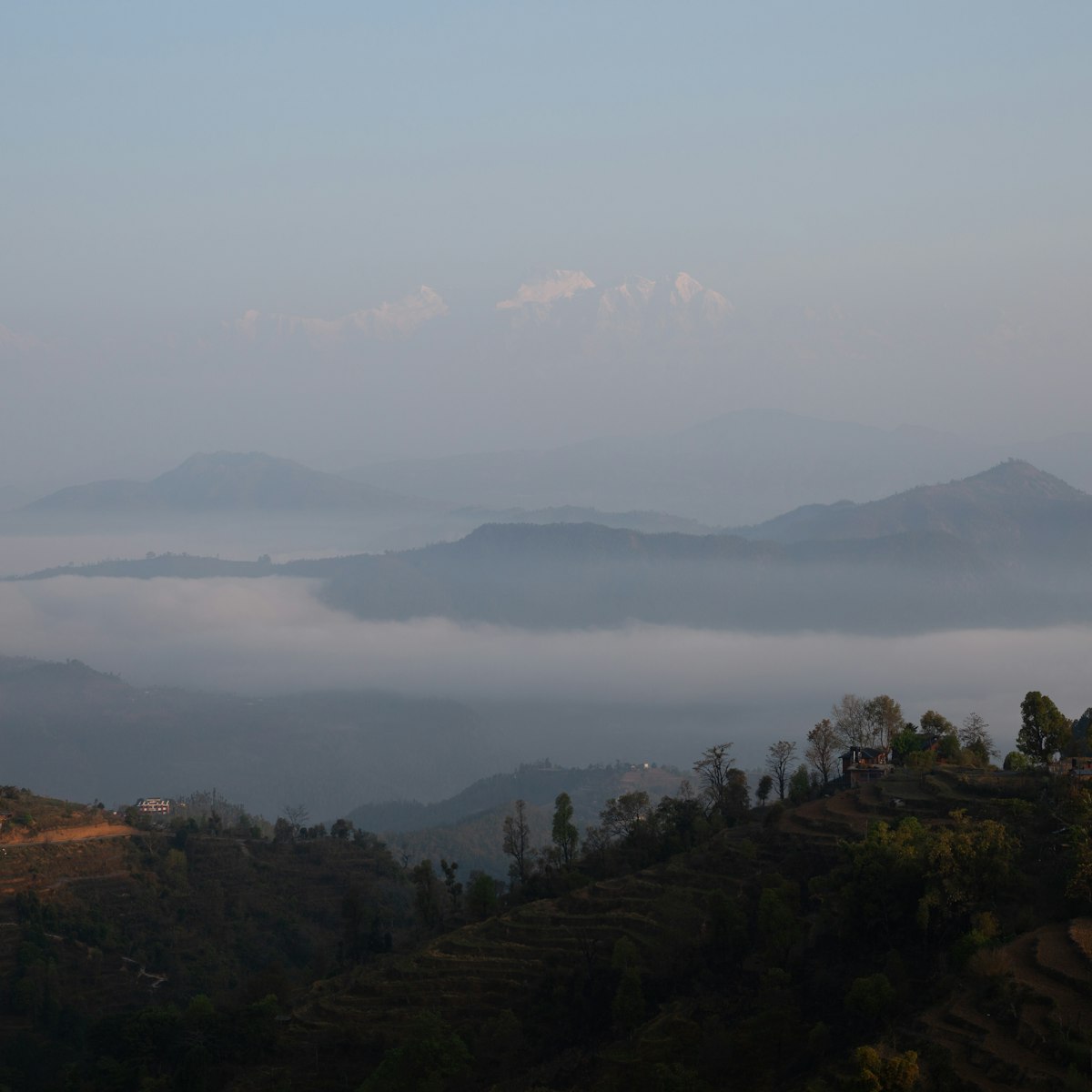Regarded by many as the crowning glory of Newari architecture, the 16th-century Gorkha Durbar is a fort, palace and temple all in one. Miraculously, the main structure survived the 2015 earthquake, but damage was extensive, and at the time of research, repairs were still under way. The temple-palace perches high above Gorkha on a knife-edge ridge, with superb views over the Trisuli Valley and magnificent panoramas of the soaring peaks of the Annapurna, Manaslu and Ganesh Himalaya.
As the birthplace of Prithvi Narayan Shah, the Durbar has huge significance for Nepalis. The great Shah was born here around 1723, when Gorkha was a minor feudal kingdom. Upon gaining the throne, Prithvi Narayan worked his way around the Kathmandu Valley, subduing rival kingdoms and creating an empire that extended far into India and Tibet.
The Durbar is an important religious site, so leather shoes and belts etc should be removed. Most pilgrims enter through the western gate, emerging on an open terrace in front of the exquisite Kalika Temple, a psychedelic 17th-century fantasy of peacocks, demons and serpents, carved into every available inch of timber. Only Brahmin priests and the king can enter the temple, but non-Hindus are permitted to observe from the terrace.
The east wing of the palace complex contains the former palace of Prithvi Narayan Shah, the Dhuni Pati, covered in elaborate woodcarvings. This structure was severely damaged in the earthquake, so expect lots of scaffolding. Nearby is the mausoleum of Guru Gorakhnath, the reclusive saint who acted as a spiritual guide for the young Prithvi Narayan.
If you leave via the northern gate, you’ll pass the former Royal Guest House – note the erotic roof struts and the crocodile carvings on the window frames.
Down from here is a vividly painted Hanuman statue, and a path leading to a large chautara (stone resting platform) on an exposed rocky bluff with awesome views and a set of carved stone footprints, attributed variously to Sita, Rama, Gorakhnath and Guru Padmasambhava.
To reach the Durbar, you can climb an exhausting stairway of 1500 stone steps, snaking up the hillside, or take a taxi (Rs 450 including waiting time) along the road winding up to a car park just below the northern gate.

